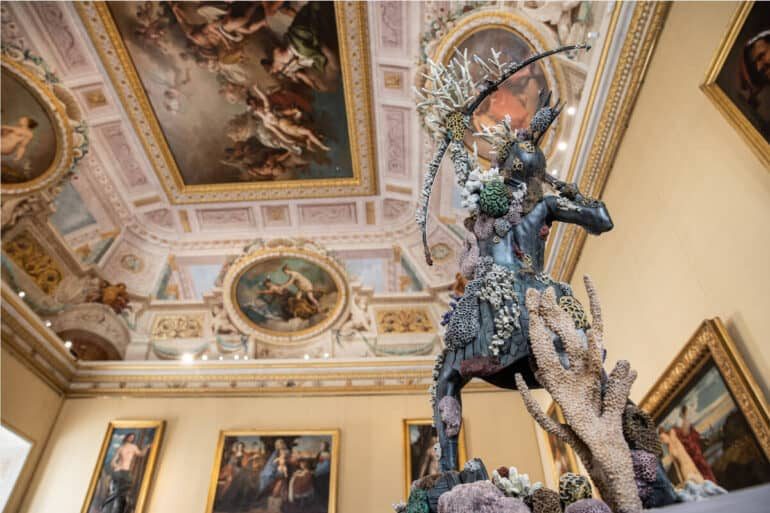Archaeology Now by Damien Hirst between Bernini and Caravaggio at Galleria Borghese
Galleria Borghese is the home of the exhibit Archaeology Now, curated by Anna Coliva e Mario Codognato, from Damien Hirst’s series Treasures from the Wreck of the Unbelievable. The exhibit is running from June till November 2021.
Over 80 artworks are on display, placed in every room of Villa Borghese’s museum, side by side with ancient masterpieces. The exhibit is very heterogenous in terms of medium, size and material. Statues, busts, small-sized objects, and even Hirst’s own paintings Colour Space, are seamlessly placed in the museum, harmoniously clashing with the permanent collection.
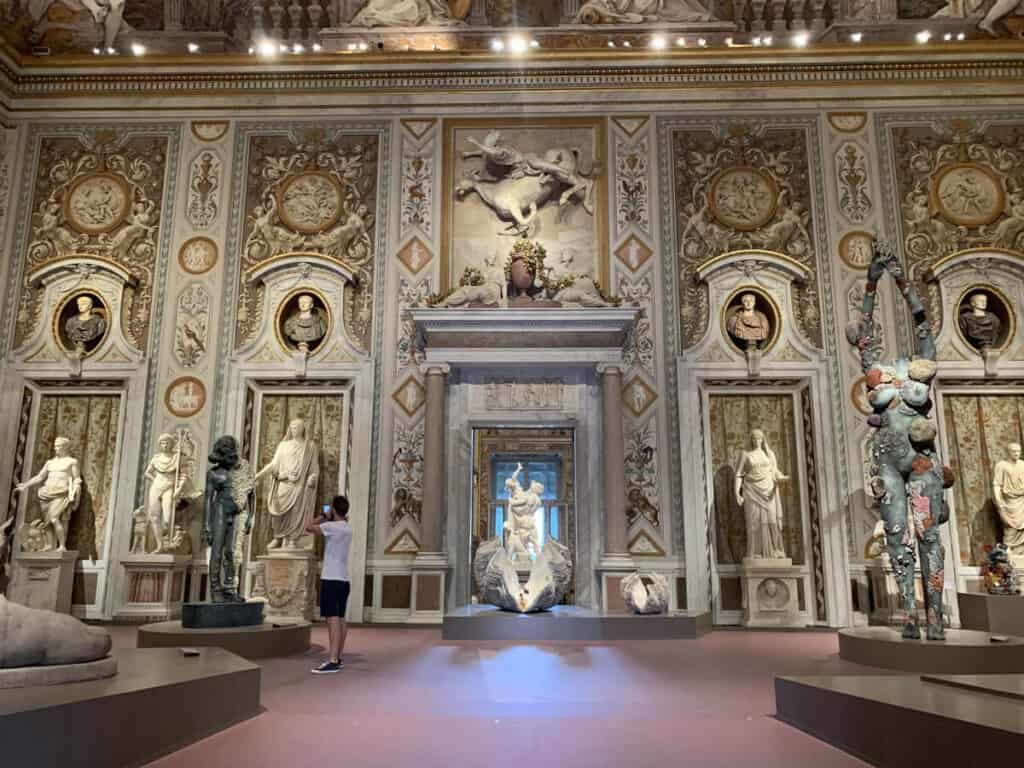
A rather baroque array of archers, faraohs, demons, divinities, skulls, three-headed monsters, keep company to classical statues by Canova and Bernini and paintings by Caravaggio and Raphael. Damien Hirst will leave you speechless with his first Villa Borghese exhibit — one of many, we hope. As if the permanent collection wasn’t enough to trigger Stendhal syndrome in the viewers, the juxtaposition with Hirst’s works makes everything even more surreal.
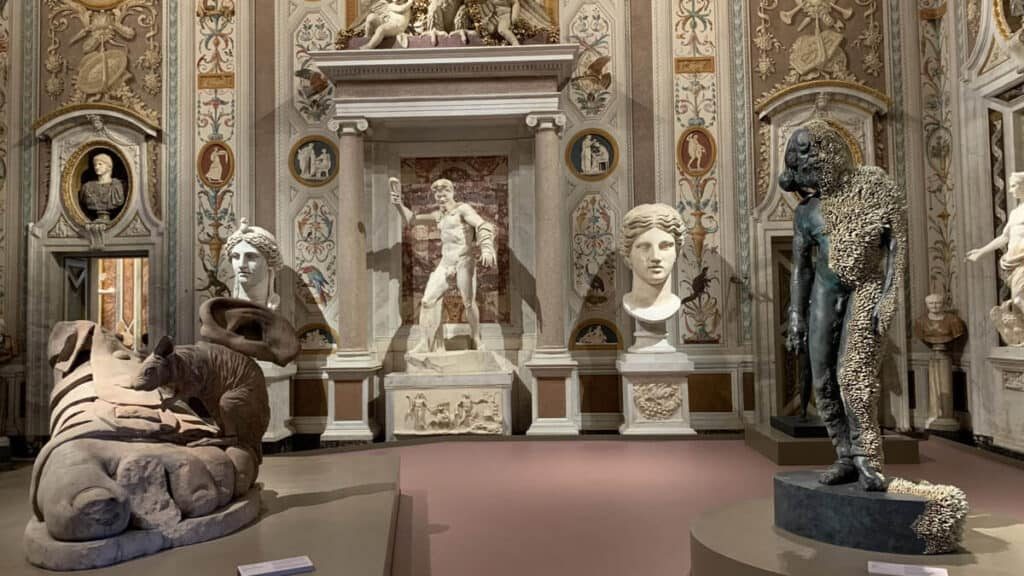
Damien Hirst, defined as an alchemist of materials and the former enfant terrible of the Young British Art, investigates and challenges the notions of our contemporary world. Finding the uncertainties of our fragile being, he finds a way into the complex relations between art, religion, science, beauty, life and death.
Right by the 1st century statue of a satyr sitting on a dolphin, you’ll find a woman’s head in Carrara marble, with emerald for eyes in the style of Faraoh Akhenaton, or also the bust of an unknown Faraoh, shining in its blue granite, gold and white agate.
Before Caravaggio’s “Boy with a fruit basket”, a mixture of beauty and horror, sex and death, poison and antidote, circle around the decapitated head of a terrible Medusa in malachite.
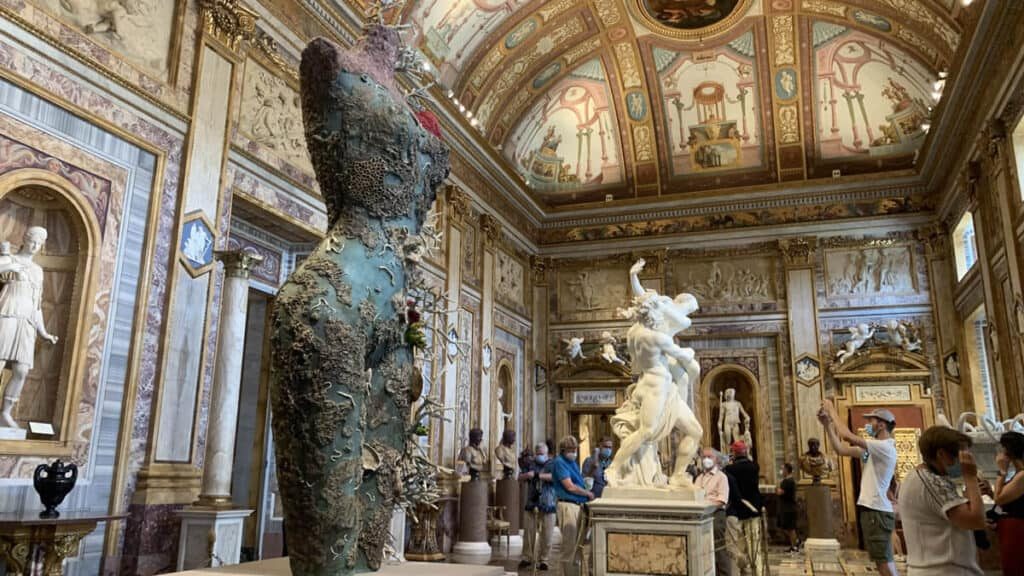
The true surprise, though, is the female body covered with leftovers from the sea. The statue stretches upwards, towards the 700s vault by Mariano Rossi. Another similar sculpture stands next to Proserpina’s marble body. Other sculptures of note are the bronze archer and the red marble Aton, the Egyptians’ god of the sun.
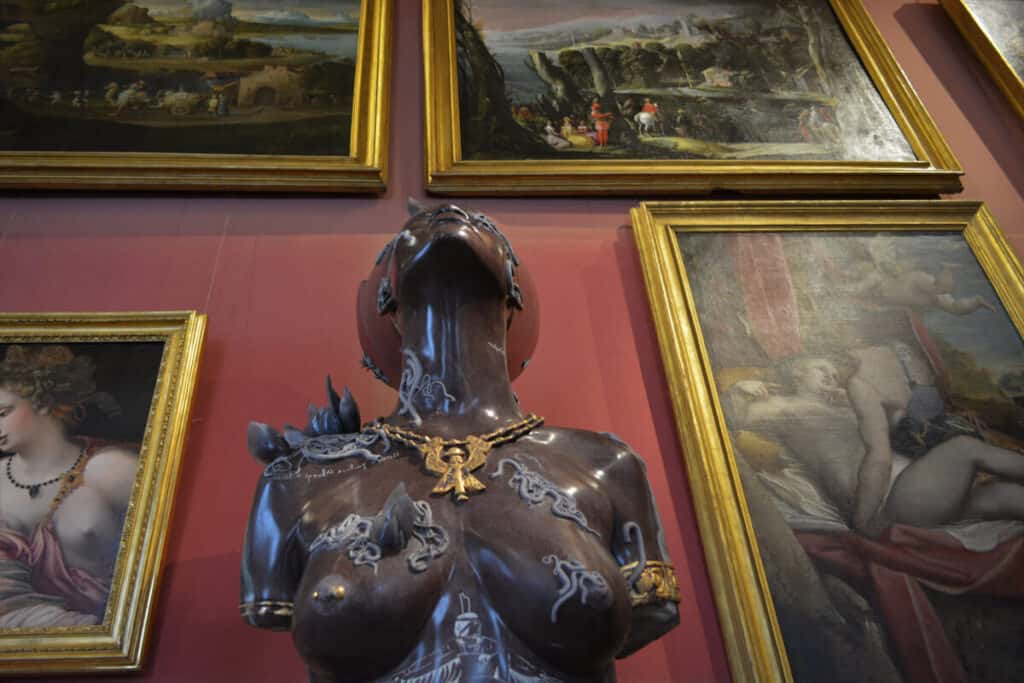
Hirst’s own paintings “Colour Spaces”, appearing in Italy for the first time, shatter the idea of a unified image: they fluctuate, clash and merge with each other, gaining a sense of movement that is in open antithesis with the canvas itself.
The sublime of the exhibition, the passion for discovery, the references to classical mythology, also extend outside of the Galleria. The colossal sculpture of Hydra and Kali is the natural continuation of the artistic journey just outside in the Giardino dell’Uccelliera.
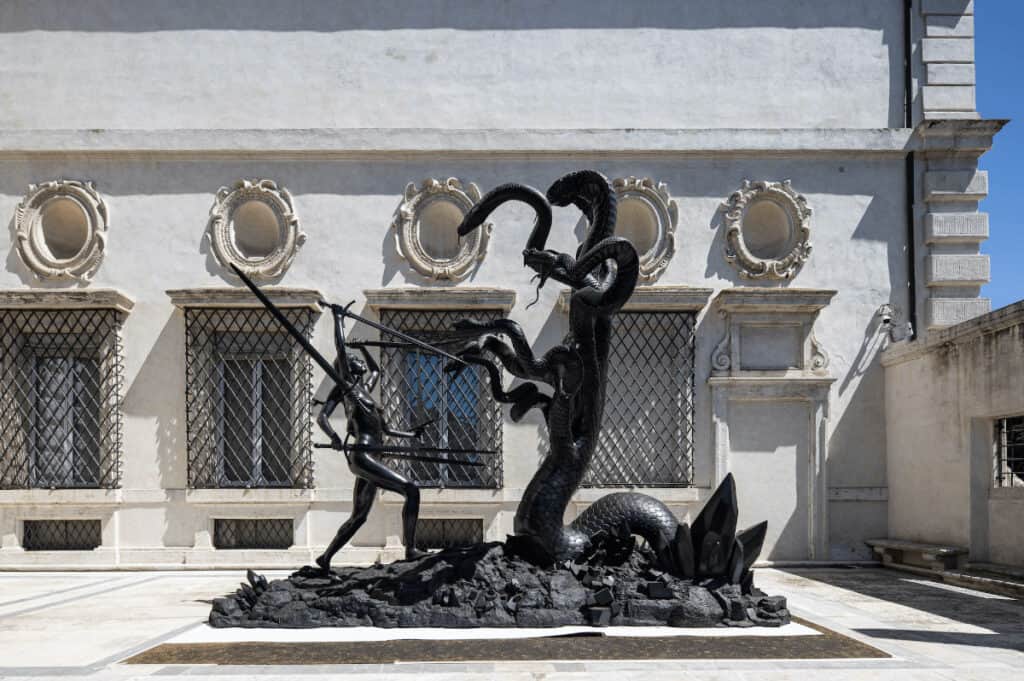
Made possible thanks to Prada’s generous support, Archaeology Now truly showcases a multitude of inventions and techniques, highlighting the permanent collection even more thanks to the pastiche and remix of classical art. The triumph of figures in the exhibit is the result of one of Hirst’s more innovative searches. Treasures from the Wreck of the Unbelievable was a collection of hundreds of objects in the pretense that they had been discovered in a shipwreck at the bottom of the ocean containing treasures from ancient civilizations.
Buy your ticket or book your tour for the Borghese Gallery


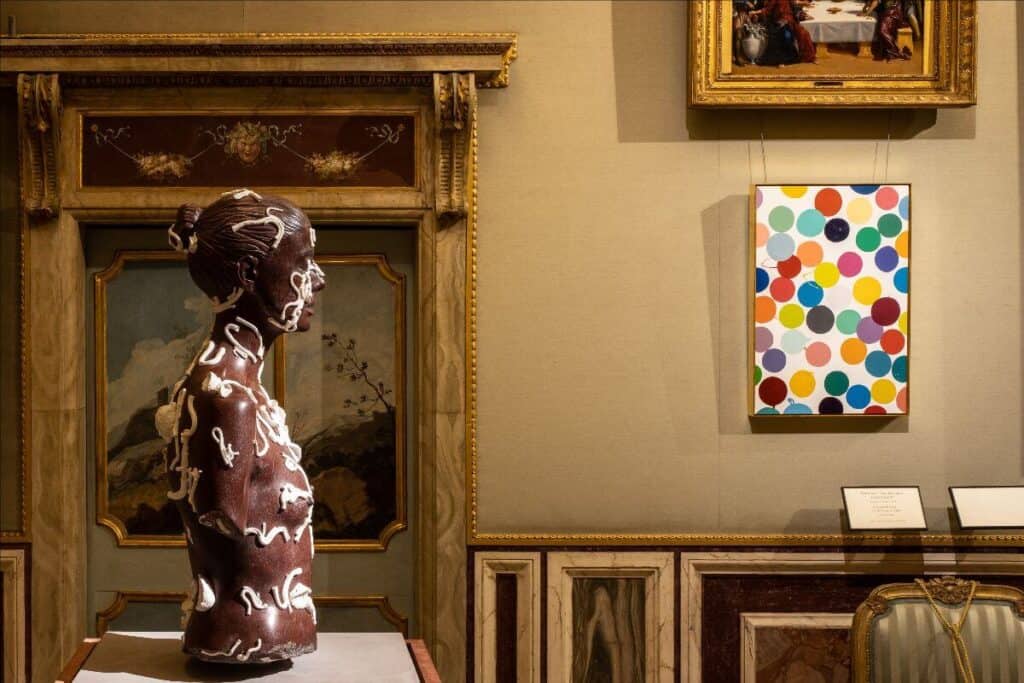
Ph. by A. Novelli © Galleria Borghese – Ministero della Cultura © Damien Hirst and Science Ltd. All rights reserved DACS 2021/SIAE 2021
It all started when Hirst had a dream about resurfacing the great ship Unbelievable (Apistos in the original Ancient Greek) and exhibiting the collection that had belonged to the 1st century freedman Aulus Calidius Amotan, also known as Cif Amotan II. Those treasures were destined for a legendary temple to the sun god in the East. In 2008, a wreck that could have been Amotan’s legendary ship was found on the western shore of Africa, and Hirst was inspired to create the concept of this magnificent exhibit.
Archaeology Now is the result of that obsessive, dreamlike search, and it will open your eyes to so much more than mythology.

DAMIEN HIRST. ARCHEOLOGY NOW.
Until November 7, 2021
Galleria Borghese
Piazzale Scipione Borghese, 5
Tickets: €13+2
CLICK HERE TO BUY TICKETS
Tuesday – Sunday
9am – 7pm (last entrance 5pm)
I turni di visita sono di due ore per un massimo di 100 persone.


